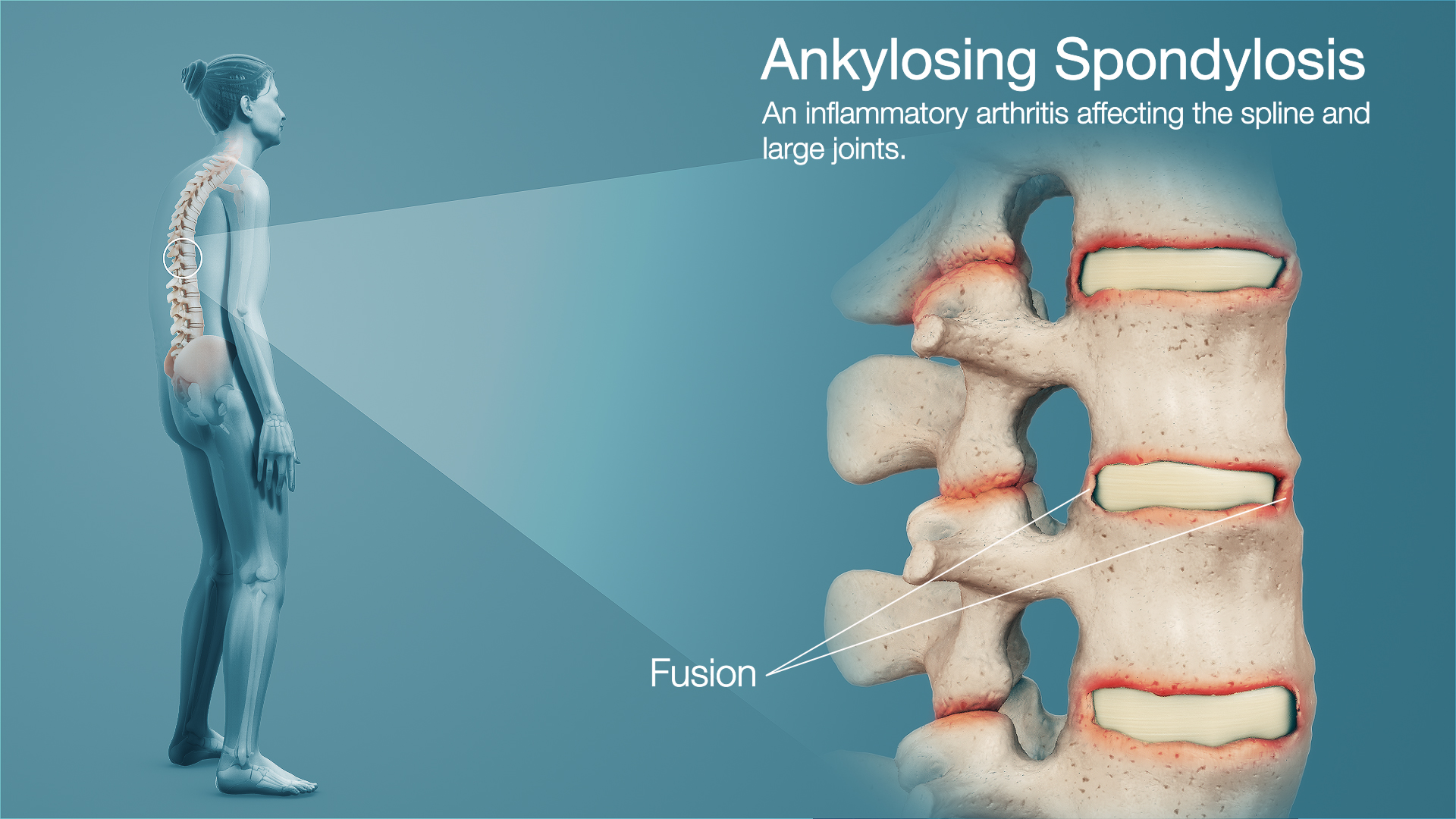Ankylosing spondylitis is a type of arthritis that affects the spine and the lower back. It is an inflammatory disease that, over a period of time, causes the small bones in the spine to fuse. It begins in the lower back and can spread to the neck and can also affect the joints in other parts of the body. ‘Ankylosis’ means fused bones and ‘spondylitis’ is used to describe inflammation in the spine. Ankylosing spondylitis is a rare type of arthritis that affects men more than it affects women. The symptoms start appearing in early adulthood.
Symptoms
Ankylosing spondylitis usually begins in the sacroiliac joints, the place where the spine connects to the pelvis. The signs and symptoms may vary from person to person but the most common symptoms are:
- An inflexible spine that curves forward
- Tiredness
- Swelling in joints
- Intermittent pain in the lower back and hips
- Pain that is worse in the morning or after a long period of inactivity
- Stiffness in joints
- Pain in thigh, heel or foot
- Reduced mobility
Causes
The exact cause of Ankylosing spondylitis is still not clear. The symptoms result from inflammation in the lower spine. When there is a new growth of bone, the inflammation leads to fusion and damage. The reason for this chronic inflammatory process is not known. However there is a genetic component to it. Though, not all people carrying the gene suffer from ankylosing spondylitis.
Treatment
Unfortunately, there is no cure for Ankylosing spondylitis and the damage also cannot be reversed. The objective of the treatment is to give some relief in pain and stiffness and delay the complications and progression of the disease. This is done through a combination of drugs, exercise, and physical therapy. In cases where there is severe damage to joints, such as the hip joint, surgery may be prescribed. The drugs that are prescribed are non-steroidal anti-inflammatory drugs (NSAIDs). Drugs are used to reduce pain and inflammation, while exercises and physical therapy are prescribed to maintain posture and mobility.
It is important to start treatment for Ankylosing spondylitis as early as possible because even though there is no cure, treatment helps in relieving the symptoms and delaying the progression of the disease. In severe cases of this spondylitis, complications such as Eye Inflammation, fractures, and heart problems also can arise.
Disclaimer: The information in no way constitutes, or should be construed as medical advice. Nor is the above article an endorsement of any research findings discussed in the article an endorsement for any of the source publications.









